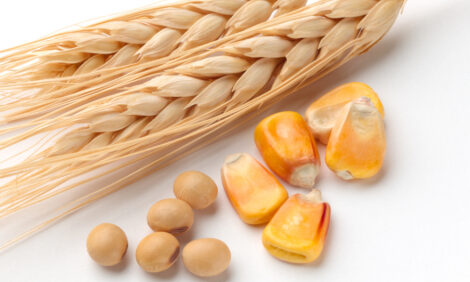



Tips for Pasture Improvement
ANALYSIS - Using a mower may be a simple way for livestock producers to improve forage quality on pastures, according to Ohio State University Extension educator Chris Penrose."Not only does mowing keep pastures looking nice, it also helps remove weeds," Mr Penrose said. "And if you mow the weeds in your pastures early in the season, it also results in another significant benefit - it removes seed heads from the grass, which encourages new growth."
He explained that early in the season, grasses focus on producing seeds as they are in their reproductive stage.
“Once that stage is done and the seed heads are removed by mowing, that encourages more leaf growth, which in turn improves the quality and quantity of your pastures,” Mr Penrose said.
“Producers who clip the weeds in their pastures again later in the season will weaken the root reserves of perennial weeds and potentially kill late summer annual weeds before their seeds can mature.”
In a posting in the Ohio State University Beef Team’s Ohio Beef Cattle Newsletter, Mr Penrose also offers other tips producers can use to both improve the use of their pastures as well as to potentially increase the performance of their cattle.
“The biggest reason we offer these tips is to help producers improve forage utilisation and lower costs, because up to 75 per cent of the costs of keeping livestock is in feed,” he said. “So any way that we can find methods to reduce costs will improve profit potential for farmers.”
Some of the other tips Penrose mentions include:
- Divide the pastures, allowing livestock to graze only one area at a time. This allows the pastures to regrow and avoids overgrazing.
- Graze your fescue pastures in late autumn (fall) and in winter. After those grasses have gone through several killing frosts, the fescue will have a higher sugar content, which will make it more attractive to livestock.
- Increase both the yield and protein content of fescue pastures by applying 50 pounds of nitrogen in late summer to early autumn. This can help make the fescue an ideal late autumn and winter stockpiled feed.
“Now’s the time to start thinking about pastures for next year,” Mr Penrose said. “Test your soils, and get your pH levels where they need to be. If your soil fertility levels are too low, it will hurt the chances of getting more desirable forages to grow.”
Read some of our other articles on feeding:
Let Them Eat Grass: Grazing Debate Back on Agenda
Winter Feeding: Watch For Mud.
TheCattleSite News Desk


